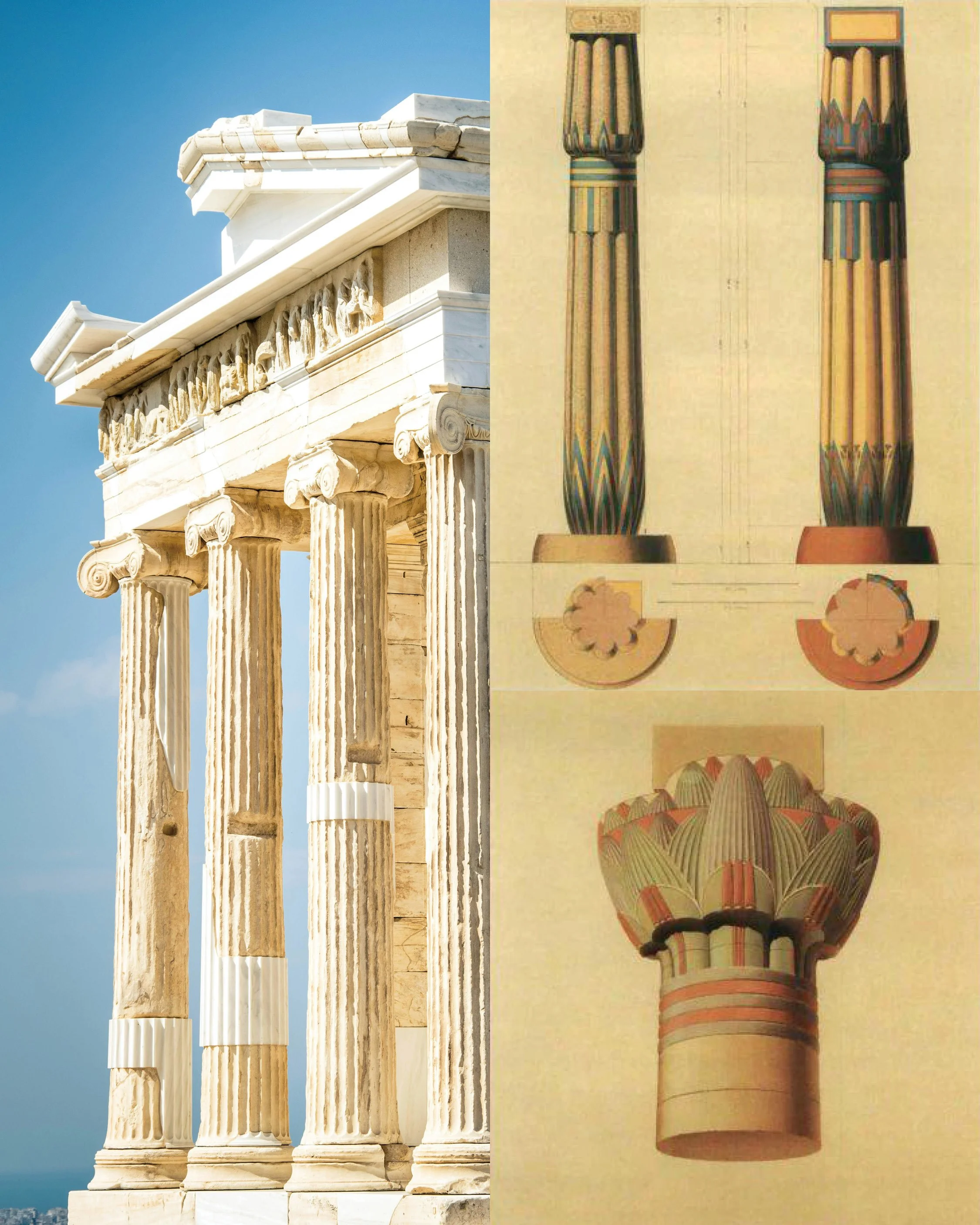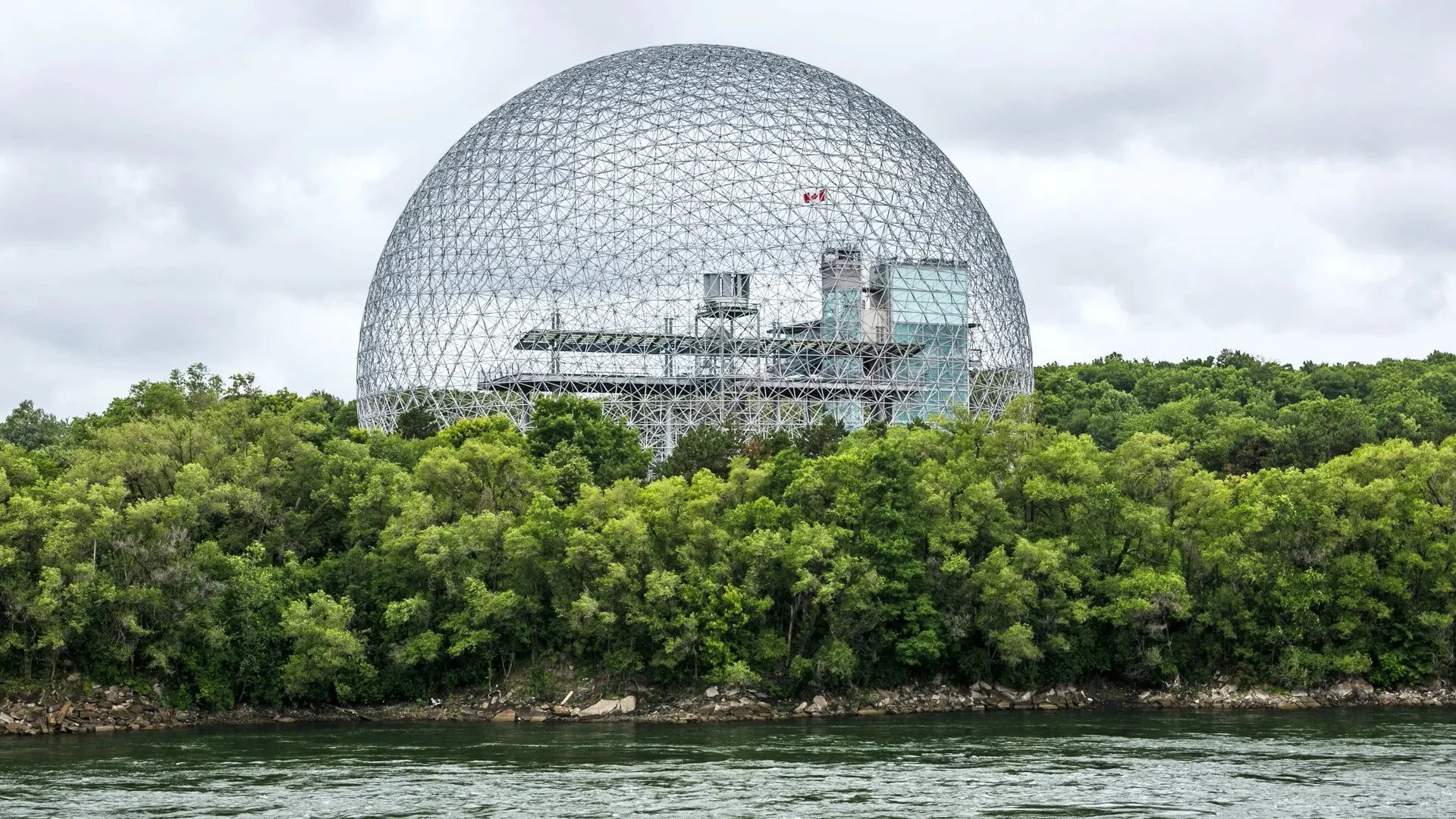《Biomimicry and Architecture: Building the Future Through Nature》
From Nature’s Inspiration to Architectural Innovation
仿生學與建築的融合: 從自然中建築未來
從自然啟發到建築創新
Biomimicry is more than just a design approach—it is a philosophy.
It does not simply ask, “What does nature look like?”Instead, it asks, “How does nature solve problems?”
For example, the intricate ventilation system of termite mounds has inspired passive cooling strategies in architecture. The hexagonal structure of honeycombs has become a timeless model for modular space design.
在人類文明發展的漫長歷程中,自然始終是我們最偉大的導師。
仿生設計(Biomimicry)不僅是一種設計思維,更是一種哲學態度。它探問的並非「自然長什麼模樣?」,而是「自然如何解決問題?」。例如,白蟻巢的精妙通風系統,成為被動節能建築的先驅;蜂巢的六角形單元結構,則成為模組化空間設計的經典範本。
Humankind’s imitation of nature can be traced back to the dawn of civilization.
Ancient Egyptian architects drew inspiration from the forms of lotus flowers and papyrus plants to create iconic architectural motifs in their columns. Similarly, the Doric and Ionic orders of ancient Greece are often seen as abstract expressions of tree trunks and plant tendrils.
人類對自然的模仿可以追溯到文明的黎明時期。
古埃及建築師在設計柱式時,便已借鑑蓮花與紙莎草的形態,創造出經典的建築語彙;古希臘的多立克柱式和愛奧尼亞柱式,亦被視為對樹幹與植物卷鬚的抽象化表達。
The Montreal Biosphère, Buckminster Fuller
With the rise of science, design has moved beyond intuition and begun to focus on careful observation of nature.
As sustainability, energy efficiency, and performance become central themes in architecture, biomimicry has also shifted toward function and structure.
隨著科學的興起,設計不再只依賴經驗,開始專注於自然觀察。
當永續、節能、效率成為建築的焦點時,仿生思維也隨之轉向功能與結構層面。
Eastgate Centre, Zimbabwe
When the spirit of biomimicry is applied to architecture, we witness the emergence of biomimetic architecture.
These buildings draw inspiration from nature not only in their appearance, but also in climate regulation, energy efficiency, spatial logic, and structural innovation.
This design philosophy goes beyond traditional architectural thinking, viewing buildings as living organisms that adapt, breathe, and evolve.
當仿生的精神應用在建築領域,我們便見證了仿生建築(Biomimetic Architectur)的誕生,這些建築不僅外觀靈感來自自然,更在氣候調節、能源利用、空間邏輯與結構創新上。
這種建築理念超越了傳統的設計思維,將建築視為一個活的有機體。
In an era obsessed with efficiency and technology, the most intelligent architectural ideas may not come from complex algorithms, but from the simple wisdom of a single leaf.
Perhaps in the future, architecture will no longer be defined by cold concrete and steel. Instead, it may evolve into a living organism—one that breathes, grows, adapts to its surroundings, and continues to transform over time.
在這個講求高效與智能的時代,最智慧的建築設計,或許並非來自繁複的電腦運算,而是源於一片葉子的啟示。
也許在未來,建築將不再是冰冷的混凝土和鋼鐵構築物,而是成為能夠呼吸、生長、適應環境並不斷進化的生命體。
Nanyang Technological University, Singapore
規劃合作聯繫:
Info@maudarchitect.com
More Info : www.maudarchitect.com
Follow IG: @maudarchitect






